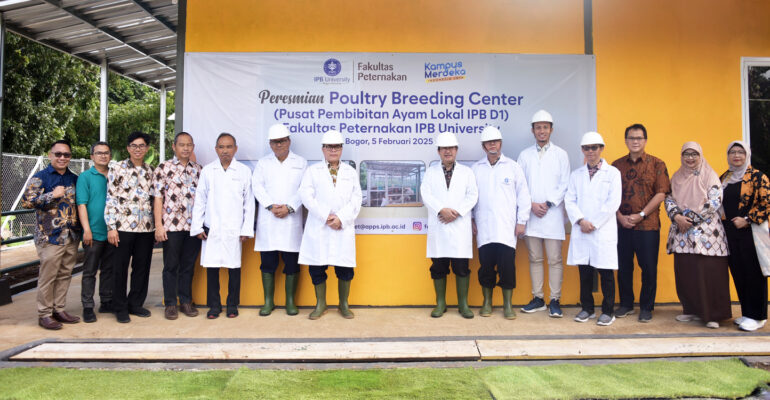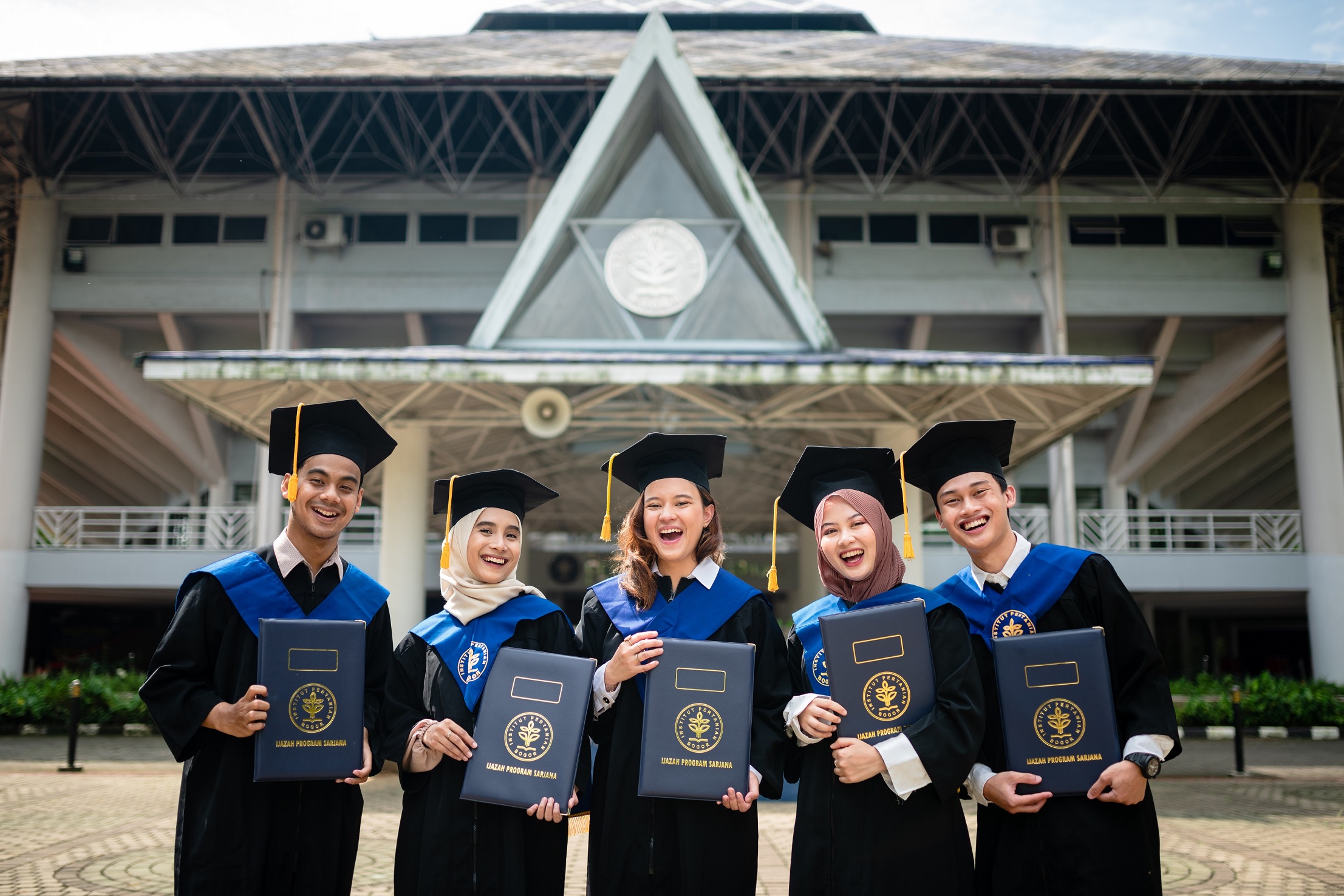More Complete! After Teaching Feed Industry, IPB University Now Has a Poultry Breeding Center

IPB University has inaugurated the Poultry Breeding Center at the Faculty of Animal Science. This facility serves as the breeding center for IPB-D1 chicken, a local poultry innovation by IPB University. The Poultry Breeding Center further enhances the existing facilities at the Faculty of Animal Science to support educational and research activities for lecturers and students.
The Poultry Breeding Center consists of a starter house covering 80 square meters with a capacity of 1,000 chickens, a grower house covering 145 square meters with a capacity of 1,600 chickens, and a breeder house covering 80 square meters for 160 parent stocks.
The Dean of the Faculty of Animal Science at IPB University, Prof Idat Galih Permana, stated that the Poultry Breeding Center aligns with the Higher Education Flagship Research Program (PUPT), particularly in the field of food security. The presence of this facility is expected to improve the quality of local poultry breeding in Indonesia.
Vice Rector of IPB University for Research, Innovation, and Agromaritime Development, Prof Ernan Rustiadi, described the Poultry Breeding Center as a long-awaited dream come true. This is because the closed-house facility for developing local poultry, especially IPB-D1 chicken, has finally materialized.
“Finally, we have a new facility. Now, the long-standing dream of having a closed house for breeding IPB-D1 chickens has come true. Hopefully, this will also inspire other faculties,” he said at the inauguration (5/2).
Prof Ernan also specifically praised the Faculty of Animal Science for its achievements as one of the faculties with the best research performance and the highest lecturer publication ratio.
IPB-D1 chicken is one of the innovations of Prof Cece Sumantri, a professor at the Faculty of Animal Science at IPB University. In 2019, IPB-D1 chicken was officially recognized as a local broiler breed. His long-term research with his team since 2010 has also successfully developed the IPB-D2 and IPB-D3 chicken breeds.
One of the advantages of IPB-D1 chicken is its fast growth rate, reaching slaughter weight (1.1 kg for males and 1.0 kg for females) at 12 weeks of age. Another advantage is its strong resistance to Newcastle Disease (ND) and Salmonella. The meat and egg quality are also considered excellent.
As the innovator, Prof Cece Sumantri expressed hope that the Poultry Breeding Center will further optimize the growth and development of IPB-D1 chickens, particularly in terms of genetics.
“We also already have our own feed mill. This is expected to further enhance productivity. For example, IPB-D3 chickens can reach a weight of 1.3 kg in just 10 weeks. In the future, there will also be chickens specifically for fattening and breeding purposes,” he explained.
Previously, at the end of last year, the Faculty of Animal Science also inaugurated the Teaching Feed Industry, an integrated livestock feed factory. Along with the inauguration of the Poultry Breeding Center, the faculty also introduced the Co-Working Space and Student Hall, designed not only as a learning space but also as a social hub for students. (Rz) (IAAS/RUM)



